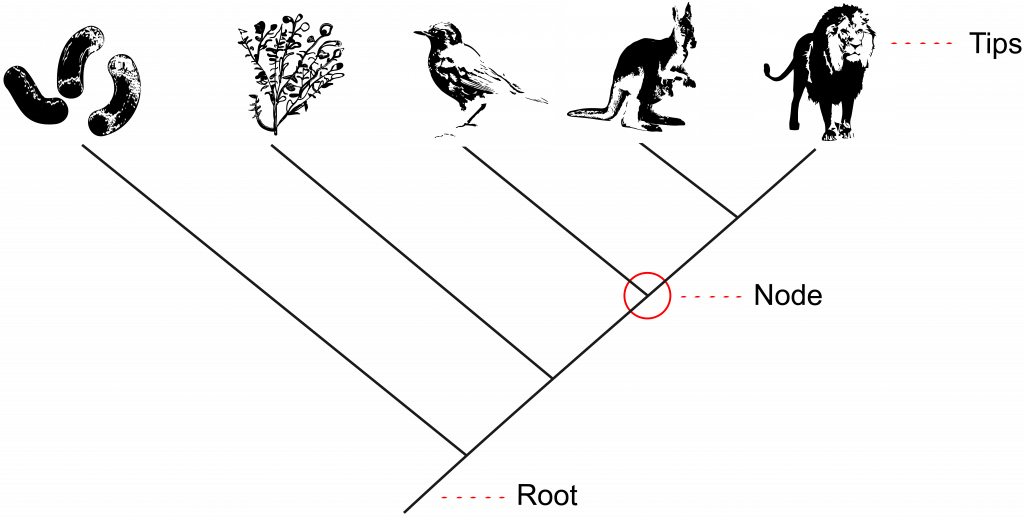2.16 Species & Phylogenetic Trees
What is a species?
It is surprising that, given the frequency and ease with which the term is used, there is no universally accepted definition of “species.” Historically, and in many contemporary uses, a species is defined as a group of actually or potentially interbreeding populations of individuals. This is the biological species concept; and its applications are vast. However, there are limitations to this species definition, as documented in the cases of asexual organisms and hybridizing populations. In addition, proponents of the phylogenetic species concept argue that the reproductive definition is evolutionarily irrelevant; instead, a species should be the smallest taxonomic unit, an intact group of organisms that share common ancestry. Yet the point at which one population is considered two distinct species is itself arbitrary, and based on perceived similarities—be they genetic, morphological, behavioral, etc. The situation is further confused by numerous other definitions of species.
In the typical model of speciation, a population is somehow subdivided into two or more allopatric (or physically isolated) populations. These populations experience different mutations, different selective forces and different random events of genetic drift, thus diverging in their evolutionary trajectories. Over time, the populations become sufficiently distinct to warrant identification as separate species. This distinction may be due to some sort of reproductive isolating mechanism, which can be either a pre-mating isolating mechanism or a post-mating isolating mechanism. Pre-mating isolating mechanisms are often behavioral differences (such as bird songs) or habitat preferences that prevent two individuals from courtship or copulation. Post-mating isolating mechanisms often result from genetic incompatibility, whereby offspring may result but they are not viable.
Phylogenies tell an evolutionary story
A phylogeny represents evolutionary relationships between different types of organisms. When we say “turtles, lizards, snakes, birds, and mammals are all amniotes (animals that reproduce with specialized, amniotic eggs), we are speaking phylogenetically.

We use phylogenetic trees to visualize these relationships (Figure 12.8). In a phylogenetic tree, closely related organisms are joined by nodes. These nodes suggest common ancestry.
 Read More
Read More

